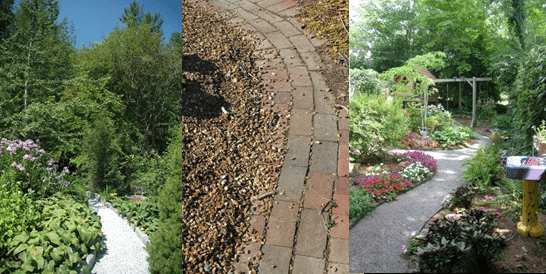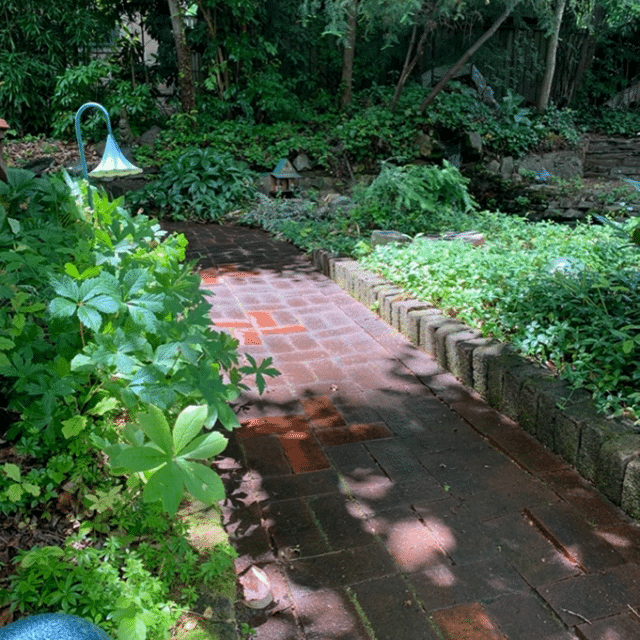REGAINING THE EDGE
DEFINITION OF SPACE, THE KEY TO SUCCESSFUL GARDEN DESIGN
Having crisp lines in the garden accentuates both beds and turf.
Seeing an object clearly and in focus is important. The ability to define edges and see crisp definition keeps us from rubbing our eyes or cleaning our glasses. Just as a treasured photo or painting requires a frame to appreciate its beauty, our gardens also require clean boundaries and pleasing lines. I’m not speaking about delineation between plant masses here, in naturalistic planting design we often seek to blur the edges a bit. My focus on this writing relates more to those lines that separate lawn from beds and those that define circulation.
When it comes to edging there are loads of materials from which to choose and I won’t even get close to covering them all here. The most common is something I call the “natural, trench-type edge”. This is made when a V-shaped cut is made with a spade or sometimes machine, if done professionally, allowing mulch or planting to be separated from lawn. In my case, the wheel of the mower rides along this trench thus eliminating the need for a string trimmer. Some folks seem surprised when I tell them I don’t even own such a tool, nor do I own a blower but that is a rant for another day.
When designing any garden one of the first things I consider is the definition of lawn vs. beds. My philosophy is quite simple. Define the property by heavily planting the borders and working inward. Since I’ve kind of maxed out the planting on our small garden, I’ve since had the opportunity to begin anew on our daughter’s garden. Around the entire perimeter are mulched beds (not yet full). This was done with the intent to allow the mower to cut all grass easily and not having to squirrel around in any tough to get to corners and avoiding acute angles thus not having to use a string trimmer.
So, back to that edge. If your budget allows or if the total distance is small, you may opt for brick or stone. I’ve found that a brick “soldier course” (bricks are tight and sitting upright) is a really sharp way to define a walk or patio. Stone may also be used. I prefer cut stone sometimes called rubble (long “u”) over random, irregular rock. Steel edging may be found at the big box stores and comes in 10’ lengths with detachable pieces which hold two different sections together while acting as a stake to anchor in the ground. There is an aluminum product that does pretty much the same thing. Here is a link: https://surelocedging.com/
One thing to consider when installing steel or aluminum is the installed depth. Too shallow and it won’t be secure, too deep and it will disappear over time as you add new gravel to a path or new mulch to a bed.
One edging material I would avoid like poison ivy is the roll-top plastic garbage. It is flimsy, can’t handle most lawn equipment and all plastic (they prefer PE or polyethylene) has memory. Meaning it will always want to revert back to the direction of the original roll.

Veering off the main subject just for a smidge (surprise!), let me once more brag about our mini-meadow. This is a tiny path of the lawn I decided to let go wild. We’re on about the fifth year of this experiment and while it hasn’t evolved into a blooming display of wildflowers, it has added a refreshing nod to sustainability and habitat creation (especially for our ornamental goat grazing in its midst).
My point here is to say that this small clump of wildness is bound on all sides by traditionally maintained lawn. As a result, this edge has shown any passersby that we have not abandoned our lawn and therefore, no one has threatened to call the city to report neglect…yet. If you define such a renegade experiment by edging it with the more traditionally mown lawn, you can get away with some whimsical non-conformity.








